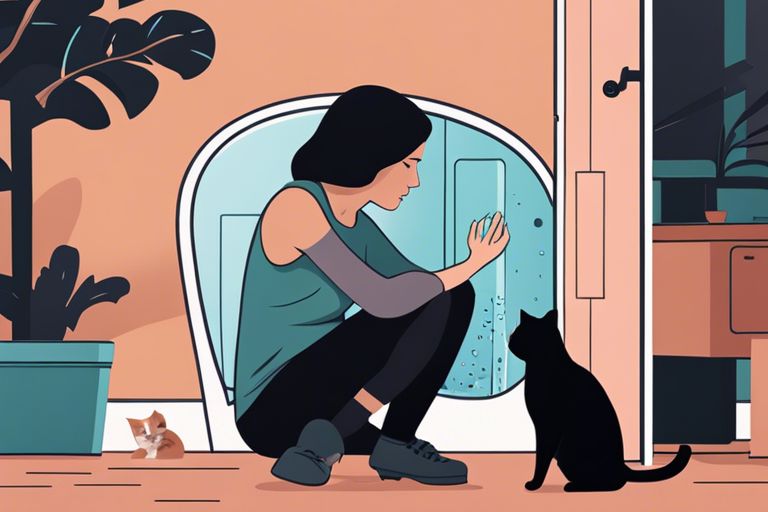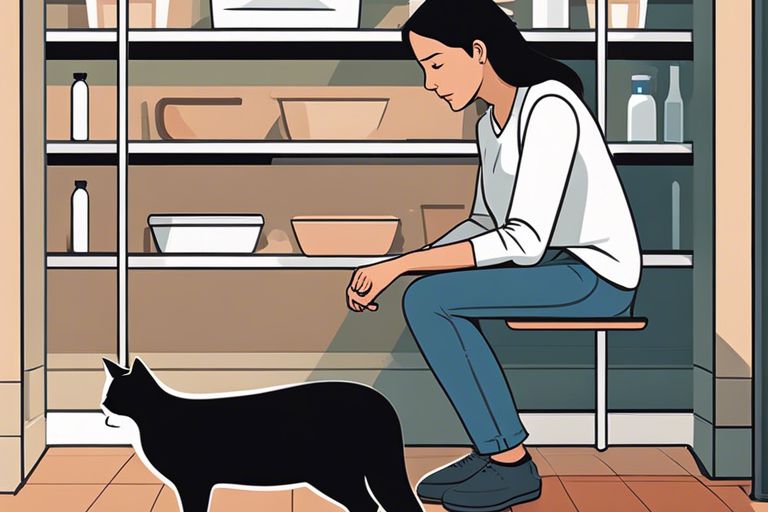Recognizing the subtle signs of urinary tract issues in your feline friend can be crucial in ensuring their health and well-being. As a pet owner, it’s important for you to be aware of the common symptoms that may indicate a urinary tract problem in your cat. These can include frequent attempts to urinate, straining to urinate, bloody urine, and urinating outside the litter box. Ignoring these signs can lead to serious complications and potential life-threatening conditions such as urinary blockages. By understanding the signs of urinary tract issues in cats, you can take proactive steps to seek veterinary care and treatment to ensure the well-being of your beloved pet.
Key Takeaways:
- Changes in litter box habits: If your cat is experiencing urinary tract issues, they may start urinating outside the litter box or may visit the litter box more frequently.
- Difficulty urinating: Look out for signs of straining or crying while urinating, or producing only small amounts of urine.
- Blood in the urine: Blood in the urine is a common sign of urinary tract issues in cats and should be evaluated by a veterinarian.
- Excessive grooming of the genital area: Cats with urinary tract issues may excessively groom their genital area in an attempt to relieve discomfort.
- Changes in behavior: Cats experiencing urinary tract issues may exhibit signs of lethargy, irritability, or discomfort.
Recognizing Urinary Tract Issues
Clearly, recognizing the signs of urinary tract issues in your cat is crucial for their health and well-being. By understanding the behavioral and physical symptoms, you can take action to address any potential problems before they develop into more serious conditions.
Behavioral Signs
When it comes to recognizing urinary tract issues in your cat, paying attention to their behavior is key. Signs such as straining to urinate, urinating outside the litter box, or vocalizing during urination can indicate a potential problem. Additionally, you may notice an increase in the frequency of urination, or your cat may appear to be in pain while urinating. If you observe any of these behavioral signs, it is important to consult your veterinarian as soon as possible.
Physical Symptoms
Alongside behavioral signs, there are also physical symptoms that can indicate urinary tract issues in your cat. One of the most notable physical symptoms is the presence of blood in the urine. If you notice any red or pink discoloration in your cat’s urine, this is a serious indication of a potential urinary tract problem. In addition, you may observe your cat excessively grooming their genital area or showing signs of discomfort when touched near their lower abdomen. These physical symptoms should prompt a prompt visit to the veterinarian for a thorough examination.
Common Urinary Tract Disorders in Cats
Some urinary tract disorders are more common in cats than others. These disorders can cause discomfort and pain for your feline friend, so it’s important to be aware of the signs and symptoms associated with each condition.
Feline Lower Urinary Tract Disease (FLUTD)
If your cat is experiencing difficulty urinating, is urinating outside the litter box, or showing signs of discomfort when using the litter box, they may be suffering from FLUTD. This condition encompasses a range of issues that affect the bladder and urethra, and it can be caused by a variety of factors including stress, diet, and genetics. It is important to seek veterinary care immediately if you suspect your cat has FLUTD, as it can lead to life-threatening complications if left untreated.
Urinary Tract Infections (UTIs)
Your cat may develop a UTI if bacteria enter the urinary tract and multiply, leading to inflammation and infection. Symptoms of a UTI in cats include frequent urination, straining to urinate, and blood in the urine. While UTIs are treatable with antibiotics prescribed by a vet, they can become serious if left untreated, potentially leading to kidney infection and damage.
Urolithiasis – Formation of Urinary Stones
Cats can develop urinary stones, known as uroliths, in their bladder or kidneys. These stones can cause urinary obstruction, leading to pain and difficulty urinating. Some stones can be dissolved with a special diet, while others may require surgery to remove. If your cat is showing signs of urinary discomfort, it’s important to have them evaluated by a veterinarian to determine if urolithiasis is the cause.
Urethral Obstruction
Urethral obstruction occurs when a blockage in the urethra prevents your cat from urinating, leading to a life-threatening emergency. Male cats are especially prone to this condition due to their narrow urethra. If you notice your cat is straining to urinate or is unable to urinate at all, it’s crucial to seek immediate veterinary care to prevent serious complications.
Idiopathic Cystitis
Idiopathic cystitis is a term used to describe inflammation of the urinary bladder with an unknown cause. Cats with this condition may show signs of urinary discomfort, blood in the urine, and increased frequency of urination. While the exact cause of idiopathic cystitis is unknown, stress and diet are thought to play a role. Treatment involves reducing stress and providing a special diet to manage symptoms.
Diagnosis and Treatment
Your veterinarian will perform a physical examination and may also run some diagnostic tests to determine the cause of your cat’s urinary tract issues. These tests may include blood work, urine analysis, and imaging such as X-rays or ultrasound. It is important to seek veterinary care promptly if you notice any signs of urinary tract issues in your cat, as Cat Urinary Tract Problems and Infections can quickly become serious if left untreated.
Diagnostic Methods
Diagnostic methods for urinary tract issues in cats may include urine analysis to check for signs of infection or crystals, blood work to assess kidney function, and imaging such as X-rays or ultrasound to look for any abnormalities in the urinary tract. Your veterinarian will use these diagnostic tools to determine the underlying cause of your cat’s urinary issues and develop an appropriate treatment plan.
Treatment Options and Management
Once a diagnosis has been made, treatment for urinary tract issues in cats may include antibiotics to treat infections, special diets to help manage certain types of urinary crystals, and in some cases, surgical intervention to address more serious conditions such as bladder stones or tumors. Additionally, your veterinarian may recommend lifestyle changes such as increasing water intake and providing a stress-free environment for your cat to help prevent future urinary tract issues. Early intervention and proper management are crucial for the long-term health and well-being of your cat.

Prevention and Care
Unlike dogs, cats are prone to urinary tract issues, so it’s important to take preventive measures to ensure your feline friend’s urinary health. Here are some steps you can take to help prevent urinary tract issues and care for your cat if they develop.
Dietary Considerations
When it comes to preventing urinary tract issues in cats, diet plays a crucial role. Ensure that your cat’s diet includes adequate moisture content to promote urinary health. Consider incorporating wet food into their diet, as it has a higher water content compared to dry kibble. Additionally, certain specialized urinary health cat foods are available, which are formulated to promote urinary tract health. Be sure to consult with your veterinarian to determine the best diet for your cat’s specific needs.
Environmental Enrichment Strategies
Creating an enriching environment for your cat can also contribute to their urinary health. Environmental enrichment can help reduce stress, which is a common trigger for urinary tract issues in cats. Provide plenty of opportunities for physical activity and mental stimulation through toys, scratching posts, and climbing structures. Additionally, make sure your cat has a quiet, comfortable space where they can retreat and feel secure. By minimizing stress and keeping your cat mentally and physically engaged, you can help support their overall well-being, including urinary tract health.
To wrap up
If you notice any signs of urinary tract issues in your cat, it’s crucial to seek veterinary attention right away. Common signs to look out for include frequent urination, straining to urinate, blood in the urine, and inappropriate urination. Additionally, if your cat is displaying signs of pain or discomfort while urinating, it’s important to address this with your veterinarian. It’s essential to understand the signs and symptoms of urinary tract issues in cats, so you can provide the necessary care and attention to your feline friend’s health and well-being. Ignoring these signs can lead to serious health complications, so don’t hesitate to seek professional help if you have any concerns about your cat’s urinary health.
FAQ
Q: What are the signs of urinary tract issues in cats?
A: Some common signs of urinary tract issues in cats include frequent urination, straining to urinate, blood in the urine, urinating outside the litter box, licking the genital area excessively, and crying or vocalizing while urinating.
Q: How can I tell if my cat is experiencing urinary tract issues?
A: If your cat is displaying any of the signs mentioned above, it is important to take them to the veterinarian for a thorough examination. The vet may perform a urinalysis, blood tests, and imaging studies to diagnose any urinary tract issues.
Q: What can I do to prevent urinary tract issues in my cat?
A: Providing fresh, clean water at all times, feeding a high-quality diet, and ensuring your cat has access to a clean litter box can help prevent urinary tract issues. Additionally, some owners find success in adding water to their cat’s food, providing special urinary health diets, and regularly monitoring their cat’s urinary habits.

Jayley, a devoted cat enthusiast, also writer for other cat blog as well. She aims to dedicated to providing comprehensive information, insights, and advice on everything you’d ever want to know about our whiskered companions.
